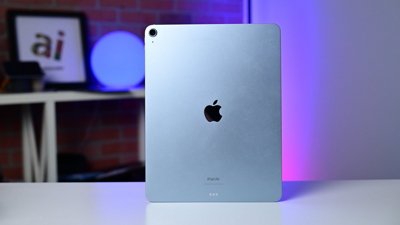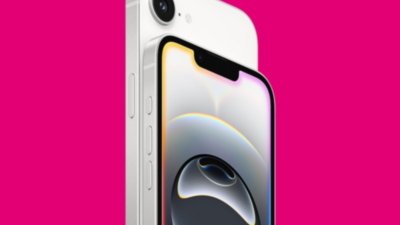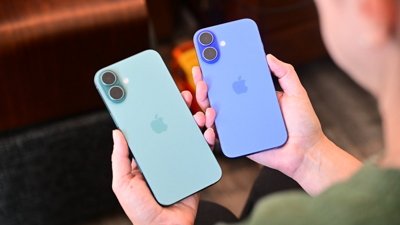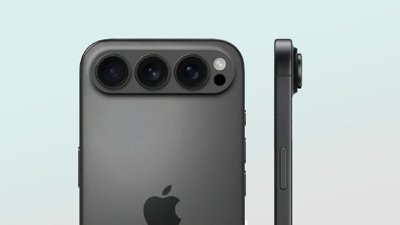An effort on the part of Apple Inc. to develop an ultra-thin and lightweight notebook with next-generation technologies such as on-board NAND flash may take a bit more time than initially reported.
Evidence suggested the Apple World Wide Developers Conference, which invades San Francisco in June, could have served as an ideal venue for company chief executive Steve Jobs to first flaunt the device. That's now unlikely to be the case.
Citing a maturing timeline, people familiar with the initiative now have the chic notebook tracking for the latter half of the year, with a contingency plan in place to transition the device into a Macworld 2008 product should engineers require the additional time.
Those sentiments were recently echoed by American Technology analyst Shaw Wu, who seconded AppleInsider's initial report with one of his own, only putting forth more relaxed expectations that had the diminutive Mac unlikely to surface until later in the year.Â
It's unclear whether Apple's delay of Leopard, the company's next-generation version of Mac OS X, will have a renewed effect on the delivery of the sub-notebook — the Mac maker's first in over a decade.Â
The compact portable is expected to draw on software support from the Leopard OS, now slated for October, for managing features such as onboard NAND flash.Â
The addition of the solid state memory to the notebook's motherboard should improve power efficiency — and thus better battery life — Â as well as facilitate near instantaneous boot times.
Another trait that may set the new Apple notebook apart from existing MacBook designs, people familiar with the project have said, may be the conspicuous absence of an optical disc drive. Although Apple's original plans for the notebook appear to have called for the drive's inclusion, it was later omitted, those people said.
For additional details on Apple's re-entry into the sub-notebook market, check out AppleInsider's earlier report.
 Kasper Jade
Kasper Jade







 Andrew Orr
Andrew Orr
 William Gallagher
William Gallagher
 Sponsored Content
Sponsored Content


 Malcolm Owen
Malcolm Owen










79 Comments
1st Post! :P
Me personally I think I could live without an optical drive but I'd really love it if Apple
added a dock. I love the "one click" nature of docking laptops. I could leave an external DVD-R
drive attached to the dock so having one locally wouldn't be much of an issue but I would rather not
have to plug and unplug monitors and other peripherals. Plus Apple could deliver the first sub-notebook with
the ability to run dual monitors along with its integrated screen.
Hot dang, subnotebook is a'comin!... it's just gonna take awhile, that's all. But my sig don't lie.
.
1st Post! :P
Me personally I think I could live without an optical drive but I'd really love it if Apple
added a dock. I love the "one click" nature of docking laptops. I could leave an external DVD-R
drive attached to the dock so having one locally wouldn't be much of an issue but I would rather not
have to plug and unplug monitors and other peripherals. Plus Apple could deliver the first sub-notebook with
the ability to run dual monitors along with its integrated screen.
I agree, Apple should have a docking station for their sub-notebook, one that is similar to the Apple Duo. Personally I do not need an optical drive or a large HD on the go, but I do need them at home. The Duo was beautifully engineered such that the station had the large memory, and all interface circuitry such as SCSI, Video, etc On the go your light, and at home you get all the desktop features. Yeah DUO should come back.
I agree, Apple should have a docking station for their sub-notebook, one that is similar to the Apple Duo. Personally I do not need an optical drive or a large HD on the go, but I do need them at home. The Duo was beautifully engineered such that the station had the large memory, and all interface circuitry such as SCSI, Video, etc On the go your light, and at home you get all the desktop features. Yeah DUO should come back.
I think it would make sense to have a docking station for each and every laptop not just for a subnotebook.
The current laptops are a mess of dangling cables. Some from the left, some for the right. Makes for a real messy desk and long time to connect and disconnect all the Sh!%.
Unlike the iMac, laptops used as desktops are a mess of cables.
Oops, sorry they are no longer laptops, they are notebooks..... The more reason to have a docking station.
I think it would make sense to have a docking station for each and every laptop not just for a subnotebook.
The current laptops are a mess of dangling cables. Some from the left, some for the right. Makes for a real messy desk and long time to connect and disconnect all the Sh!%.
Unlike the iMac, laptops used as desktops are a mess of cables.
I would also like the ability to slide out the DVD drive and replace it with a second battery.